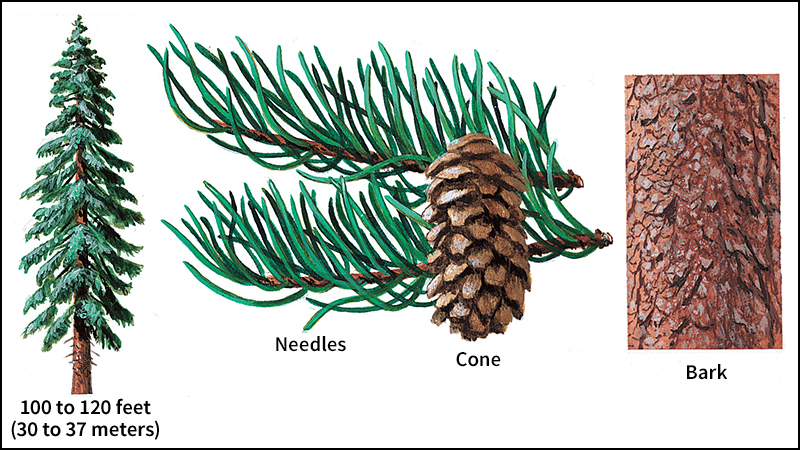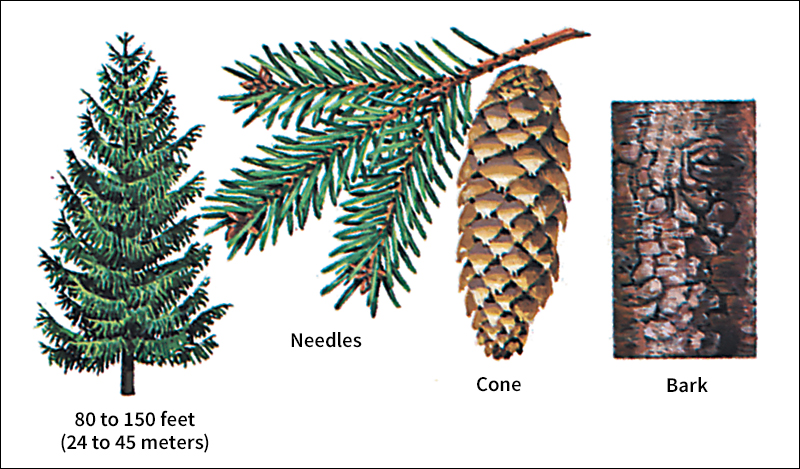Spruce is the common name of a group of evergreen conifers (cone-bearing trees) in the pine family. About 40 kinds of spruce trees are native to the Northern Hemisphere. Some spruces grow beyond the Arctic Circle. Others grow as far south as the Pyrenees Mountains in Europe. In North America, they grow as far south as North Carolina and Arizona.
Spruces are more closely related to the firs than to any other conifer. But spruces have cones that hang straight downward. Fir trees have cones that stand straight up. The scales on spruce cones remain on the cones. The scales on fir cones fall off when the cones become ripe.

Spruce foliage is also different from that of other cone bearers. Most spruce tree needles are four-sided, stiff, and less than 1 inch (2.5 centimeters) long. Woody, peglike projections join the needles to the twig. Fir trees do not have these projections. Spruce trees grow tall. Most are shaped like pyramids. In old trees, the drooping lower branches may brush the ground.
Kinds.
The white, black, and red spruces of the North and East and the Sitka, Engelmann, and blue spruces of the West are the most important commercial spruces in North America. The white and black spruces are named for the general color of the bark and foliage. The white spruce may reach a height of 150 feet (46 meters). The black is a little smaller. These spruces are more widely distributed than any other. They grow between the Bering Strait on the north, and Maine, New York, and Michigan on the south. The black spruce also grows in high altitudes in Virginia. The red spruce grows between Nova Scotia and North Carolina, and as far west as Tennessee.
The Sitka spruce grows on the Pacific Coast from northern California to Alaska. It sometimes reaches a great height, especially in the swamps or tidewater regions. A number of giant Sitkas are over 300 feet (91 meters) high. The Engelmann spruce grows from British Columbia to New Mexico. The blue spruce grows naturally in valleys in the Rocky Mountains. It is widely planted in yards because of its silver-blue foliage.


The most important spruce in Europe is the Norway spruce. This handsome tree is planted in eastern North America as an ornamental. The so-called Douglas-spruce (Douglas-fir) of Washington, Oregon, and British Columbia belongs to a different genus, but is related to the spruces. It produces more lumber than any other tree in the world.

Uses.
Spruce wood is widely used for wood pulp in the papermaking industry. The timber is strong, light, and flexible, and is well suited for masts and spars of ships. Spruce is also used to make boxes, and forms sounding boards for musical instruments.
Spruce wood is also used for interior finishing in houses. Resin, tannin, and turpentine are products of spruce bark. Beer is sometimes made from young spruce twigs. The gum of the black spruce, which is hardened resin, is another product. Dyes have been made from turpentine, a by-product of papermaking.
